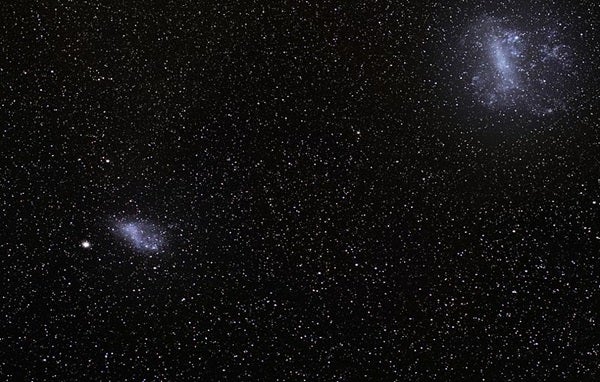An international team of astronomers used high-resolution optical spectrometry to evaluate the chemical makeup of 28 red giant stars in the galaxy’s outer halo. Spectroscopic analysis involves breaking down the light emitted by a star and sorting it by wavelength, which allows astronomers to identify its chemical compounds. A star’s chemical makeup gives insight into the environment that it formed in and helps establish its origin. Based on the outer halo stars’ composition, the study found that the inner halo stars might not be a good representation of the stellar halo in its entirety, as has been previously believed.
“The abundance of some chemical elements in the stars in the external regions of the Milky Way halo was found to be surprisingly different from the information we had concerning the inner regions of the halo,” said Instituto de Astrofísica de Canarias astrophysicist and first author of the paper, Giuseppina Battaglia, in a press release.
Although the outer halo stars’ chemical elements differ from those in the inner halo, their makeup is quite similar to stars found in the Large Magellanic Cloud and Sagittarius Dwarf Elliptical Galaxy — both massive dwarf galaxies orbiting the Milky Way as satellites. Because astronomers believe that satellite galaxies may be the leftover halos of larger galaxies that went into the assembly of the Milky Way, this correlation suggests that at least one massive dwarf galaxy was absorbed by the Milky Way, and that its remains are lingering in its outer halo.
While this discovery is a first for the Milky Way, its premise is quite common throughout the universe. “The theory explaining the formation of structure and galaxies in the Universe predicts that stellar haloes, and in particular their outer regions, consist mainly of the stellar component of destroyed, smaller galaxies,” said Battaglia. “Qualitatively this is in agreement with the observational findings of this study, where we found remnants of cannibalized dwarf galaxies around the Milky Way.”
The researchers used three different telescopes to carry out the study: the Hobby Eberly Telescope at the McDonald Observatory in Texas, the European Southern Observatory’s Very Large Telescope at Chile’s Paranal Observatory, and the Magellan Telescope at Chile’s Las Campanas Observatory.
With more advanced telescopes on the horizon, like NASA’s James Webb Space Telescope, the prospect of studying even more distant stars to learn more about the history of our own Milky Way, as well as other galaxies, has never looked better.










